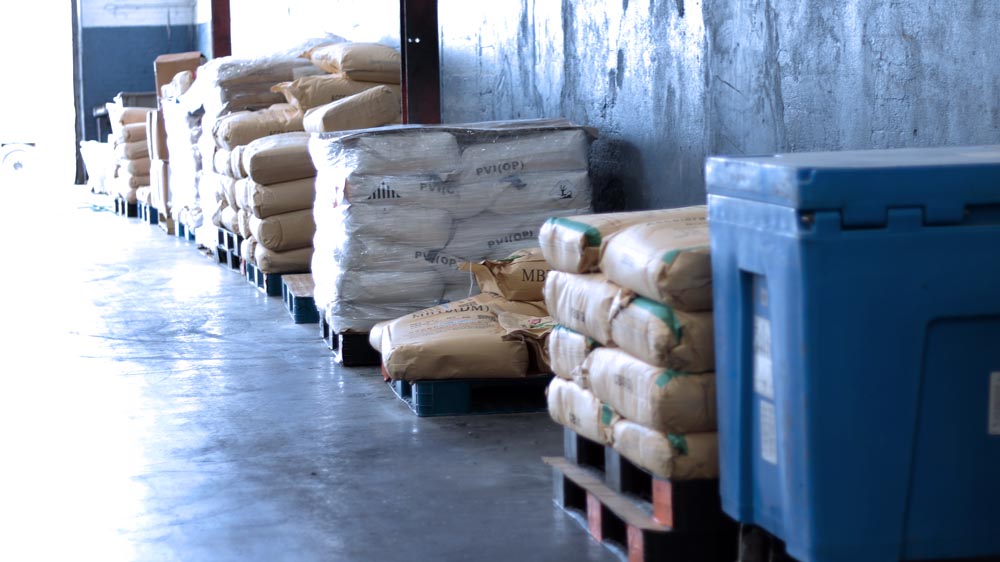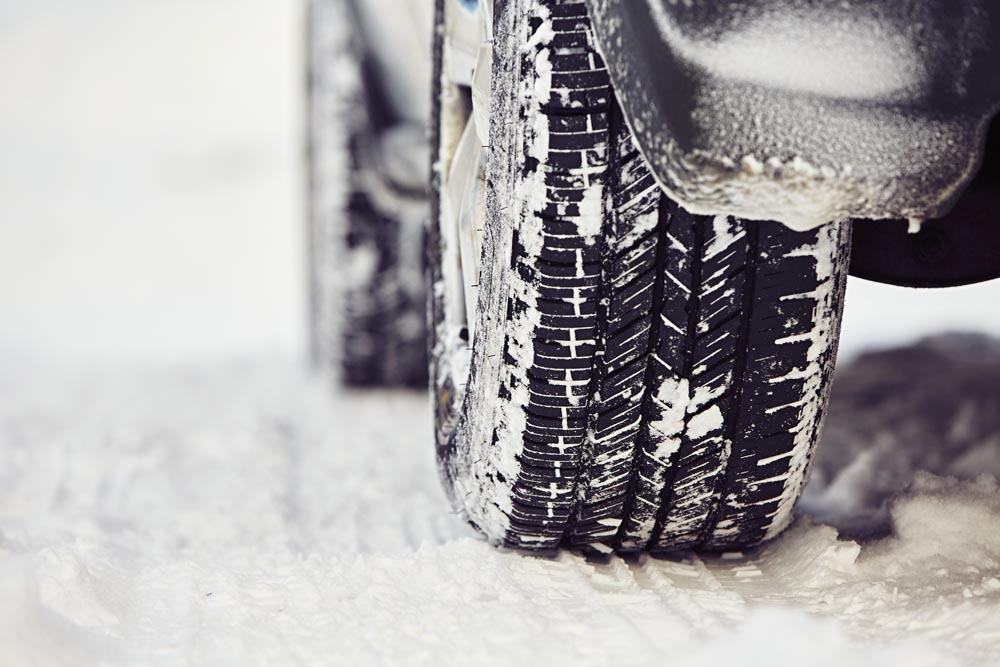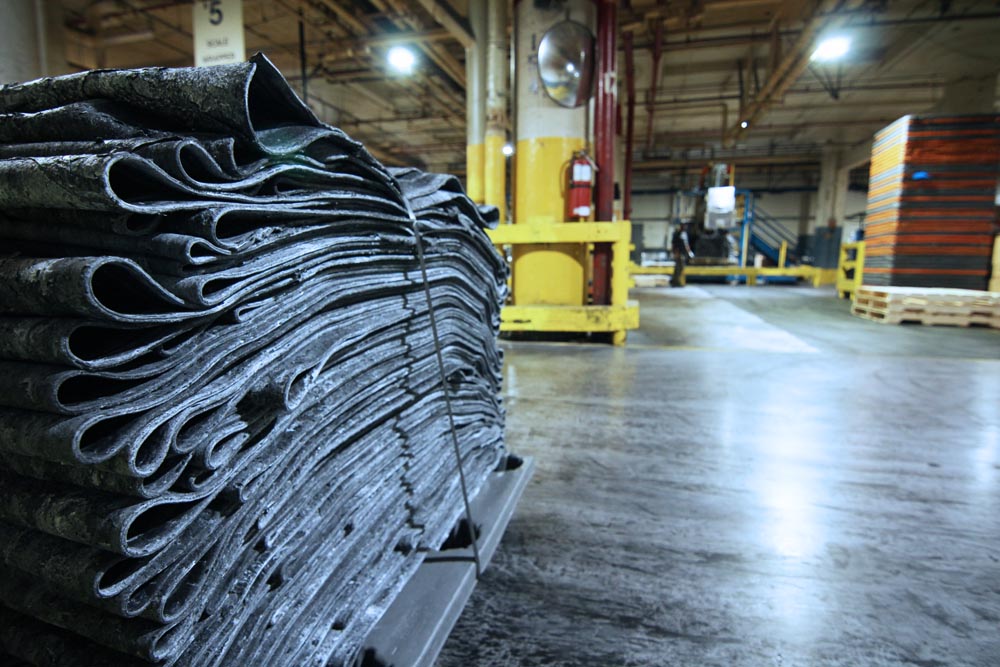Believe it or not, the word “tire” was coined sometime in the 1300s and generally meant “the dressing of a wheel”— a wheel’s “attire.” Eventually, this was shortened to “tire,” and it’s mostly been a black-tie affair since.
Jokes aside, modern tires are the evolution of a long tradition of people trying to make their wheels last longer and roll more smoothly. Today’s high-performance tires are the culmination of centuries of research into material science innovation, and companies like AirBoss Rubber Solutions are proud to supply high-quality rubber to meet modern tire demand.
It’s easy to forget that tires aren’t simply rubber wrapped around a wheel. There’s actually a lot going on under the surface in order to deliver optimal performance. Peel back the rubber with us as we take a look inside modern rubber tires.
By 2021, global demand for natural rubber exceeded fourteen million metric tons, so it’s safe to say that the manufacture and distribution of rubber is big business. As a result, custom rubber compounders like AirBoss continue to produce high-quality natural and synthetic rubber products, compounds, and innovations.
But how does the whole process work? Where does rubber come from, and how is it manufactured on a global scale?


Tires vs. Wheels
Let’s get the basics out of the way first: Wheels and tires are two different vehicle components. They each serve to propel your car down the road, and they’re both round and roll underneath your car, but technically, they’re very different parts. You wouldn’t be the first nor the last to use the two terms interchangeably and think nothing of it, so no judgment from us.
Here’s the breakdown of what a wheel is and what a tire is:
Wheels: Wheels are the hub around which a tire is attached. Wheels are generally comprised of a metal rim and a disc or spokes. The rim is the outside edge where a tire attaches, and the disc/spokes is the inside area of the wheel that connects to the axle hub.
Tires: Tires are ring-shaped, mostly-rubber components that fit around the rim of the wheel. The intention of the tire is to provide a comfortable cushion between the road and the wheel rim and to protect the wheel from damage.
Before wheels donned their rubber outfits, the term “tire” usually referred to bands of metal wrapped around wooden wheel rims. Imagine a horse-drawn carriage with wooden-spoked wheels and you’ll get the idea. Metal band tires became obsolete in most cases after the arrival of synthetic rubbers, and rubber tires today are ubiquitous.
Today, rubber tires are so prevalent that the global rubber tire market is expected to exceed $209 billion by the year 2031.
Have a unique rubber challenge? Need professional insight?
What’s Inside Today’s Rubber Tire?
The earliest rubber tires were called pneumatic tires and were made of a rubber ring and enclosed air. Iterations of pneumatic tires were used on bicycles and early automobiles, and their efficiency paved the way for more complex pneumatic tires that improved upon the initial design.
Early but long-lasting enhancements to pneumatic tires included the invention of more durable rubber compounds, more complex tire designs like bias ply tires and radial tires, and the invention of tubeless tires.
Today, most modern rubber tires are some form of a tubeless radial tire. Here’s what that means:
Tubeless tires forgo internal tubes in favor of tightly-sealed inner layers and belts of rubber, metal, nylon, and several different materials that keep in air pressure while they provide structural integrity.
Radial tires are a tire design in which the materials of the tire are arranged perpendicularly to the direction of travel. Radial tires replaced bias ply tires a while back because bias ply tires (cross ply) tended to heat up and break down faster.


With basics out of the way, let’s dig a little deeper. Here’s what’s inside your average tubeless radial tire:
Sidewall
The tire sidewall is pretty self-explanatory. It’s a rubber compound that covers the sides of the body of the tire for protection.
Tread
The tread portion of your tire is the thick rubber layer that contacts the road. Tire tread is designed for different applications, from grip to abrasion resistance, with some treads being thicker and knobbier and other treads being more streamlined and smoother.
Bead/Bead Bundles
Tire bead bundles are strands of wire on the bottom rim of the sidewall that secure the tire to the wheel.
Bead Filler
Bead filler is inside the sidewall and is often a rubber compound placed above the tire beads to fine-tune ride and handling characteristics.
Belts
Rubber belts with interwoven steel cords are laid at opposing angles under the tread to provide stability.
Body Ply Layers
Most tires have multiple body ply layers made of materials like nylon cord, rubber, and polyester to form the structure of the tire and provide strength.
Inner Liner
The inner liner is a rubber compound layer that allows the tire to maintain inflation pressure.
More complex tires may incorporate more complex components, but this is a general under-the-rubber look at most tires on the road today. But that might not always be the case.

Better, More Durable Tires Are in the Future
Every now and then a research group or automaker rolls out what it considers to be the future tire. Some iterations include lighter, more durable materials while others are designed to be airless and don’t look anything like what modern tires do.
Sentiment around what it would mean to improve on today’s tires often boils down to “better, more sustainable, and more reliable.”
What that means for the future is, quite frankly, that material scientists like those at AirBoss are working hard to design tires that are better for everyone.


